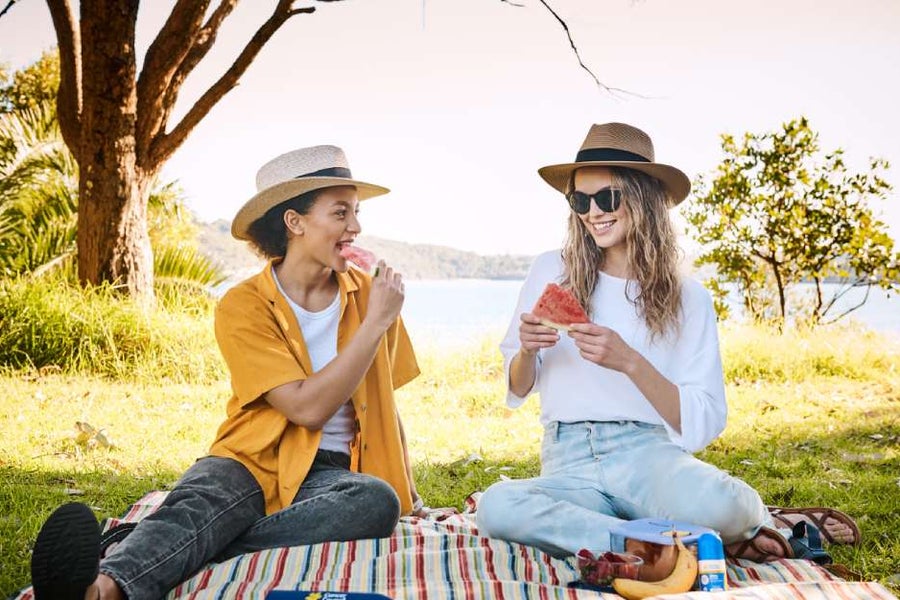National Skin Cancer Action Week: combatting Australia’s ‘national cancer’
It's still the same sun. We’re encouraging all Australians to use sun protection when the UV is 3 or above to reduce the risk of developing skin cancer.

National Skin Cancer Action Week (16 – 22 November 2025) celebrates 40th anniversary, by highlighting that we need all 5 sun protection habits front of mind when the UV is 3 or above.
This National Skin Cancer Action Week, Cancer Council, in partnership with The Australasian College of Dermatologists, is encouraging all Australians to take up all five sun protection habits, ‘Slip, Slop, Slap, Seek and Slide,’ to protect their skin when the UV is three or above and reduce the risk of developing skin cancer.
Often called our ‘national cancer’, Australia has the highest rate of skin cancer in the world. Approximately two in three Australians will be diagnosed with skin cancer during their lifetime.
When exposed to UV radiation, it doesn’t take long for skin damage including sunburn to occur, increasing the risk of developing skin cancer later in life. In fact, over-exposure to UV radiation causes up to 95% of melanomas. In every region across Australia, it is likely to reach extreme levels of UV over the summer months.
Don’t let the sun catch you off guard
Fortunately, skin cancer is almost entirely preventable. An easy way to ensure you’re protected from the sun is to make sun protection a part of your routine. While the world has changed since the 1980s when NSCAW started, one thing that remains, is we’re still living under the same sun and its harmful UV rays, making it as important as ever to remember Sid the Seagull’s iconic message ‘Slip, Slop, Slap, Seek and Slide.’
- Slip on sun protective clothing that covers as much skin as possible.
- Slop on broad spectrum, water resistant SPF50 or SPF50+ sunscreen. Put it on 20 minutes before you go outdoors and every two hours afterwards. Sunscreen should never be used as the only line of defence and should be used in conjunction with other measures.
- Slap on a hat—broad brim or legionnaire style to protect your face, head, neck and ears.
- Seek shade.
- Slide on sunglasses—make sure they meet Australian Standards.
It’s important to get to know your skin and what looks normal for you. If you notice any changes in the size, shape or colour of an existing spot, or the development of a new spot, you should get it checked by a GP or your dermatologist as soon as possible.
Cancer Council is pleased to be delivering this national campaign in partnership with The Australasian College of Dermatologists, highlighting the importance of being SunSmart.
Download the National Skin Cancer Action Week assets here.
Cancer Council has launched its first Sunscreen Hub, all about sunscreen with facts advice and research you can trust.
